Food
Banana Ganesh
Read all about it here.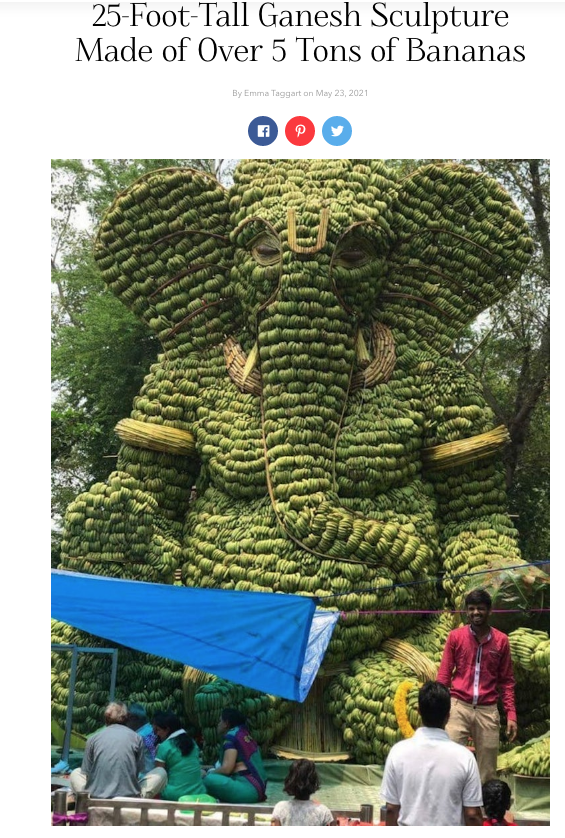
Posted By: Paul - Mon May 24, 2021 -
Comments (3)
Category: Animals, Art, Statues and Monuments, Food, Religion, Bananas
Follies of the Madmen #507
Lecherous donut wants new franchisers.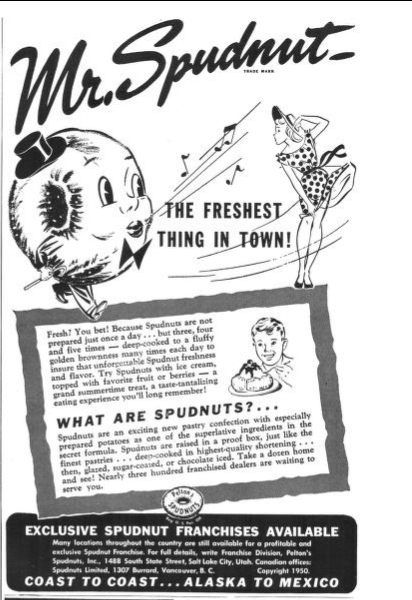
Posted By: Paul - Tue May 18, 2021 -
Comments (1)
Category: Anthropomorphism, Business, Advertising, Food, 1950s
Jan Švankmajer’s “Lunch”
Creator's Wikipedia page.
Posted By: Paul - Sun May 02, 2021 -
Comments (2)
Category: Food, Movies, Surrealism, 1990s, Eating
Mrs. Rorer’s Vegetable Cookery and Meat Substitutes
Beyond Meat? Impossible Burger? You'll turn your nose up at these after you've tasted some of Mrs. Rorer's vegetarian recipes!Read the whole book here.
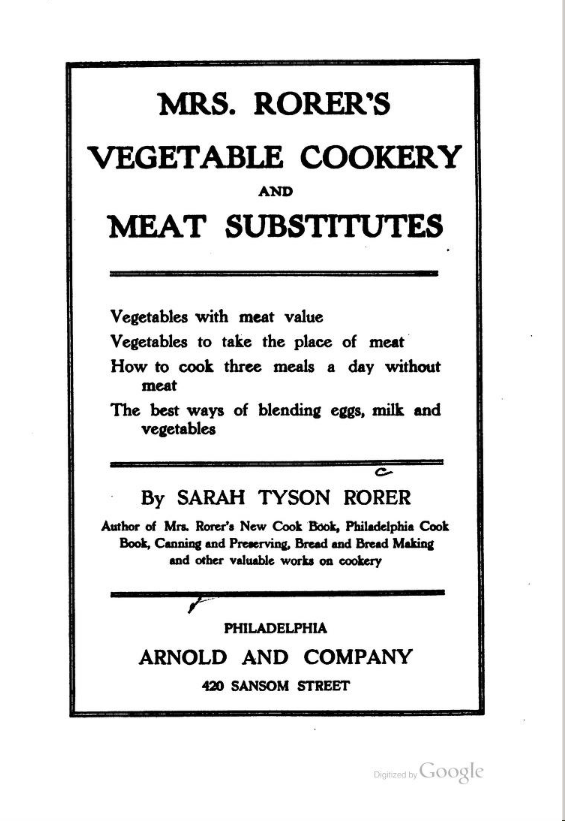
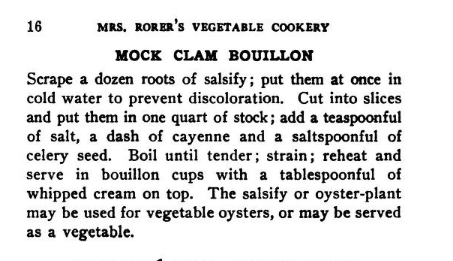
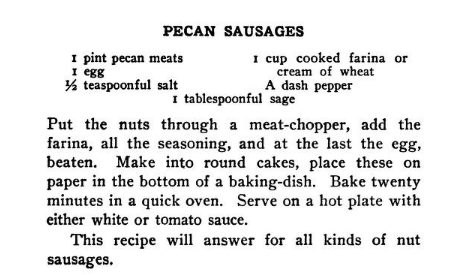
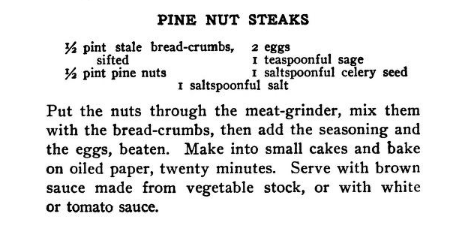
Posted By: Paul - Wed Apr 21, 2021 -
Comments (2)
Category: Food, Vegetarians and Vegans, 1900s, Nausea, Revulsion and Disgust
Fancy Feast Recipes for Humans
Another odd cookbook: Cat-food maker Fancy Feast has released a book of recipes for humans. As explained in the book's introduction:Apparently anticipating that few people would be willing to buy this cookbook, they've posted it online as a free downoad.

Posted By: Alex - Thu Apr 15, 2021 -
Comments (4)
Category: Food, Cookbooks, Cats
The American Airlines Recipe Book
We recently posted about the American Airlines Wine Club, which allows people to enjoy wines served inflight at home. Turns out that in 1994 the company did something similar with its airline food, publishing a recipe book so that people could "prepare their inflight favorites at home". It was titled A Taste of Something Special.The book was given to frequent fliers, rather than being sold to the public. But you can now download a pdf of the entire thing via Michigan State University Library.



Yonkers Herald Statesman - Feb 8, 1996
Posted By: Alex - Wed Apr 14, 2021 -
Comments (8)
Category: Food, Cookbooks, Air Travel and Airlines, 1990s
Lys Chelys, French Female Fakir
Modern performers like David Blaine, who entomb themselves in glass boxes, are carrying on an old tradition, as seen below in the first video with Lys Chelys.The still photo shows her exiting her "sarcophage" after 57 days without eating.
After her items, we have a full movie utilizing the same theme.
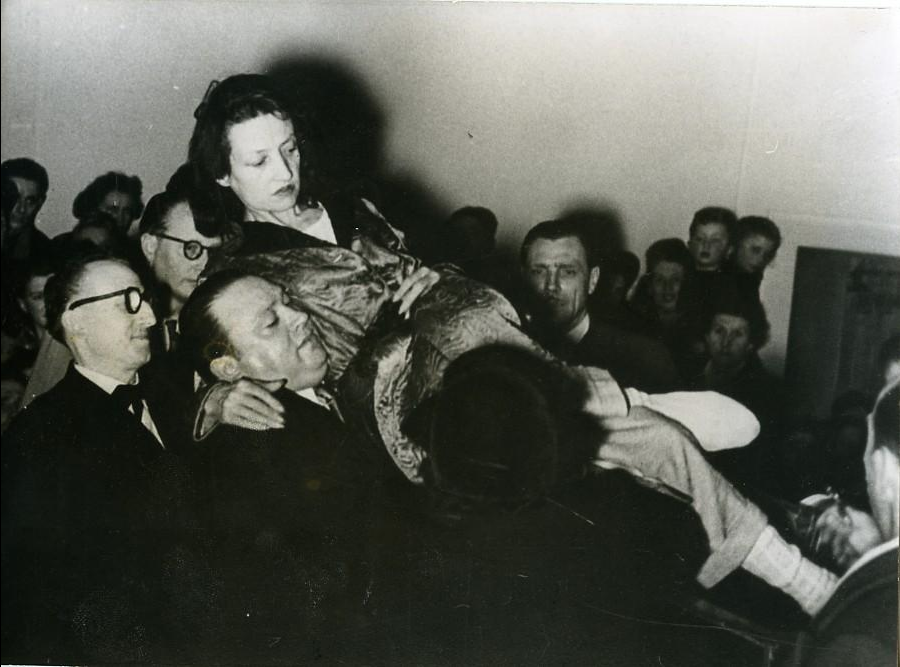
Photo source.
Posted By: Paul - Fri Mar 05, 2021 -
Comments (1)
Category: Food, Magic and Illusions and Sleight of Hand, Performance Art, 1950s, Europe, United Kingdom
Baitinger’s Automatic Eater
I posted last week about a 1940's invention which envisioned putting restaurant diners on a conveyor belt so that they could be carried past food stations. Several readers commented that the Japanese have embraced the opposite concept, of putting the food on a conveyor belt so that it travels past the diners.I did some research and discovered that the origin of the idea of having food on a conveyor belt traces all the way back to 1919 when John Moses Baitinger of Minnesota applied for a patent on this concept, which he called his "Automatic Eater". His patent was granted in 1923. He had small wooden cars, laden with food and drinks, moving along tracks, pulled by a system of cables.


Karal Ann Marling discusses some of the history of Baitinger's invention in her book Blue Ribbon: A Social and Pictorial History of the Minnesota State Fair:
The ensemble was the invention of the Reverend J.M. Baitinger, an Evangelic churchman, who stationed himself out in front with a megaphone to ballyhoo a new era in state fair dining: "Haba! Haba! Haba! This is the place to be merry. Eat! Eat! Eat! All you want for 50 cents; for without a full stomach you cannot enjoy the fair. Haba! Haba! Haba!"
The Automatic Eater cost Baitinger more than one thousand dollars to build but, because of its novelty and the economies it permitted, the cafe more than paid for itself during a trial run conducted on the last few days of the 1920 fair. "Through the medium of the Automatic Eater," he stated the following summer, "I do away with all excess help and employ only one cook, a dish washer, and a woman to keep the train well stocked with food. I pay no attention to what my customers eat, how long they stay or how much food they consume." But there were healthy profits, which Baitinger turned over to a St. Paul hospital.
Baitinger's Eater was, in many ways, a perfect expression of the mentality of the automation-mad 1920s, obsessed with speed, technology, and efficiency. There were minor drawbacks to the system, however. Diners seated near the end of the line sometimes found that the only cargo left for the eating was boiled cabbage.

Posted By: Alex - Sun Feb 28, 2021 -
Comments (2)
Category: Food, Inventions, Patents, Restaurants, 1910s
The Sundae of Tomorrow
The centerpiece of the 1939 New York World's Fair was a pair of structures known as the Trylon and Perisphere. Even today, they look very futuristic.
It occurred to some that the structures looked a bit like a scoop of ice cream and an upside-down cone. This inspired ice-cream parlors throughout America to offer what they called the "World's Fair Sundae" or the "Sundae of Tomorrow".


Hagerstown Daily Mail - July 21, 1939
It's a nice looking sundae. I'd get one if they were offered today. Though now the reference would be lost on most people.
Posted By: Alex - Fri Feb 19, 2021 -
Comments (3)
Category: Food, Junk Food, 1930s
Recipes for Cooking Domestic Rabbit Meat
During World War II, as the country faced meat rationing, the U.S. Government decided to promote rabbit meat as an alternative to beef and chicken. As part of this effort, the Department of the Interior released a pamphlet, "Recipes for Cooking Domestic Rabbit Meat". It included recipes such as "Rabbit Chop Suey," "Vagabond Stew," and "Wartime Rabbit Casserole". The pamphlet noted:
Entrepreneur Martin French of Los Angeles must have had visions of the rabbit-meat market taking off. In 1940, he received trademark protection for "Bunnyburger" — his ground rabbit meat business.

I'd like to think that, in some alternative reality, the government's plan worked and it's possible to go into a McDonald's and order a McBunny with Cheese.
Posted By: Alex - Thu Feb 18, 2021 -
Comments (8)
Category: Food, Cookbooks, 1940s

| Who We Are |
|---|
| Alex Boese Alex is the creator and curator of the Museum of Hoaxes. He's also the author of various weird, non-fiction, science-themed books such as Elephants on Acid and Psychedelic Apes. Paul Di Filippo Paul has been paid to put weird ideas into fictional form for over thirty years, in his career as a noted science fiction writer. He has recently begun blogging on many curious topics with three fellow writers at The Inferior 4+1. Contact Us |




